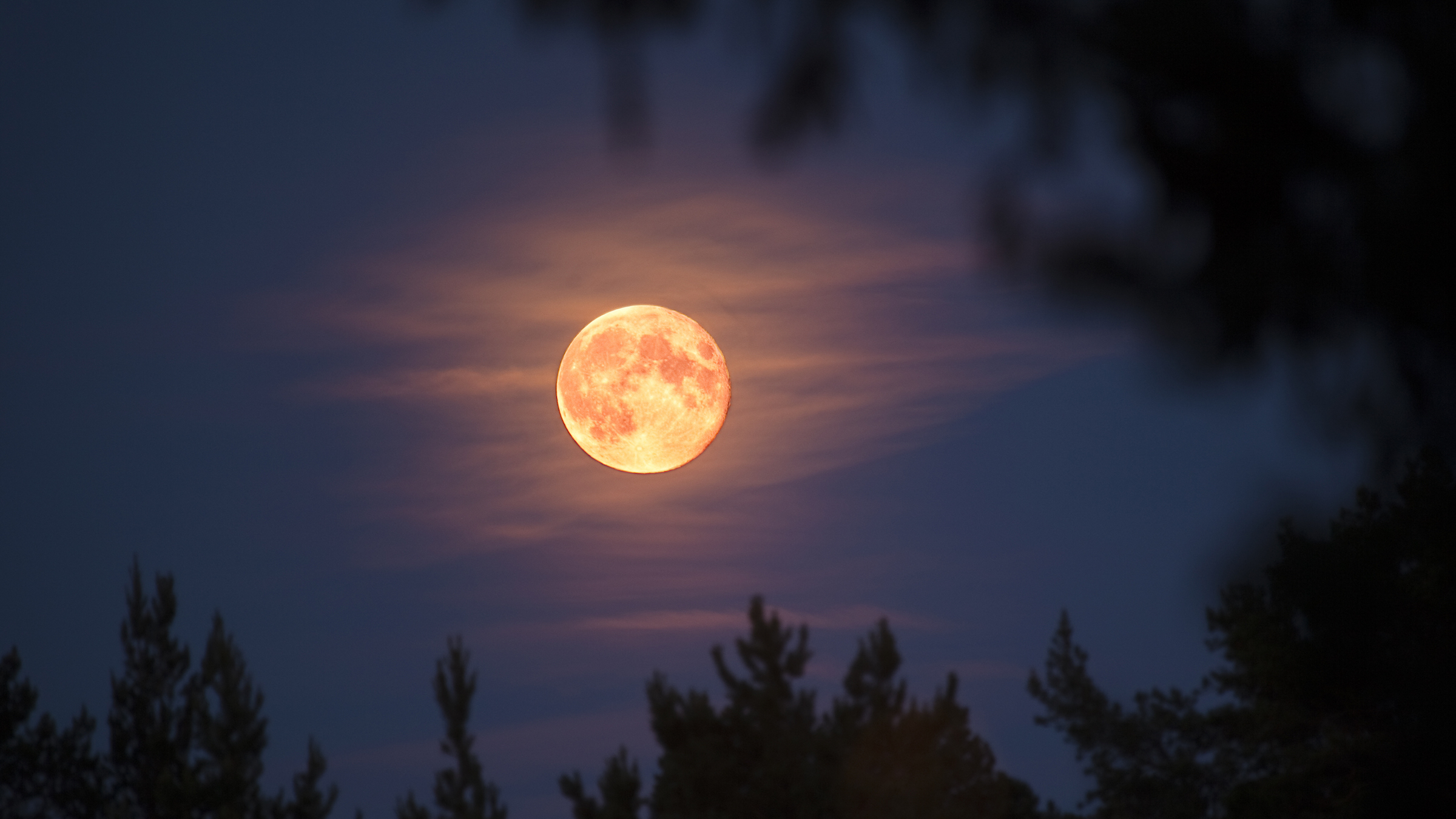Here's how to watch June's 'Strawberry' supermoon this Thursday
It's the last supermoon of 2021.

If you're planning a moonlit walk to escape the hot summer sun, mark Thursday (June 24) on your calendar. That's the day the Strawberry Moon, the last supermoon of 2021, will bring a luminous glow to the night sky.
During a full moon, the sun, Earth and moon line up along a 180-degree line. But because the moon's orbit is slightly different from Earth's (it's 5 degrees off the plane of Earth's orbit), it's usually a little higher or a little lower than Earth's shadow when the celestial lineup happens, meaning it's possible for the sun's light to completely illuminate the side of the moon facing Earth, Andrea Jones, a science communicator at NASA, previously told Live Science in a video interview.
The Strawberry supermoon will be completely full only for a moment on Thursday — at 2:40 p.m. EDT (1840 GMT) — but to the casual observer, it will appear full a few days before and after that, Space.com, a Live Science sister site, reported.
Related: This amazing photo reveals a lunar eclipse like you've never seen it before
June's full moon won't be above the horizon in North America when it's completely full, but skywatchers can catch the Strawberry Moon at moonrise, which begins at 8:53 p.m. EDT in New York. To check local moonrise times, look up your location on timeanddate.com.
The Strawberry Moon, the first full moon of summer, got its name from the strawberry growing season in the northeastern United States and parts of eastern Canada. The Algonquin tribes that lived in these places enjoyed the sweet fruit, according to the Farmers' Almanac. Strawberries are native to North America, and Europeans didn't know about them until the early 1600s, according to The Spruce Eats. As such, many Europeans call this moon the Rose Moon, after the fragrant flower that was in full bloom in June, according to the Farmers' Almanac.
June's moon is also a supermoon, although it's not the largest one of 2021. That honor went to May's blood red supermoon, which was also a lunar eclipse. The term "supermoon" was coined by an astrologer in 1979 and refers to moons that are closer than usual to Earth when they're full. Supermoons are up to 14% larger and 30% brighter than typical full moons, according to NASA.
Sign up for the Live Science daily newsletter now
Get the world’s most fascinating discoveries delivered straight to your inbox.
On average, the moon is 240,000 miles (386,000 kilometers) from Earth. However, during its current monthly orbit, the moon will be closest to Earth (at perigee) Wednesday (June 23), at about 223,600 miles (359,800 km) away, according to Heavens Above. In contrast, May's supermoon occurred when it was a bit closer, at 222,022 miles (357,311 km) away from our planet.
If inclement weather blocks your view, be sure to catch the virtual livestream of the Strawberry Moon rising over Rome at 3 p.m. EDT (1900 GMT) on June 24, courtesy of The Virtual Telescope Project. For viewers in the Northern Hemisphere, the Strawberry Moon will be the southernmost full moon of 2021, astrophysicist Gianluca Masi, founder and director of The Virtual Telescope Project, wrote on his website. "In Rome, that night it [the moon] will be 22 degrees ... above the horizon, at its highest," Masi said.
Skywatchers can catch the next full moon, the Buck Moon, at 10:37 p.m. EDT on July 23 (0237 GMT on July 24).
Originally published on Live Science.

Laura is the archaeology and Life's Little Mysteries editor at Live Science. She also reports on general science, including paleontology. Her work has appeared in The New York Times, Scholastic, Popular Science and Spectrum, a site on autism research. She has won multiple awards from the Society of Professional Journalists and the Washington Newspaper Publishers Association for her reporting at a weekly newspaper near Seattle. Laura holds a bachelor's degree in English literature and psychology from Washington University in St. Louis and a master's degree in science writing from NYU.









